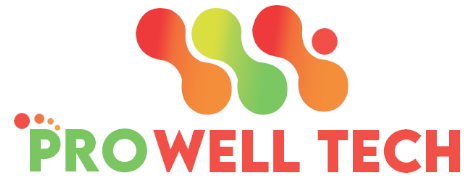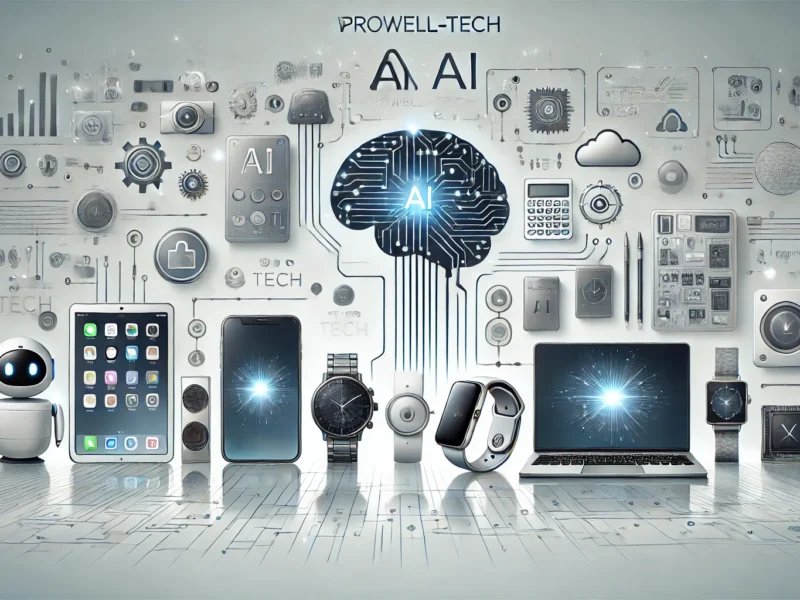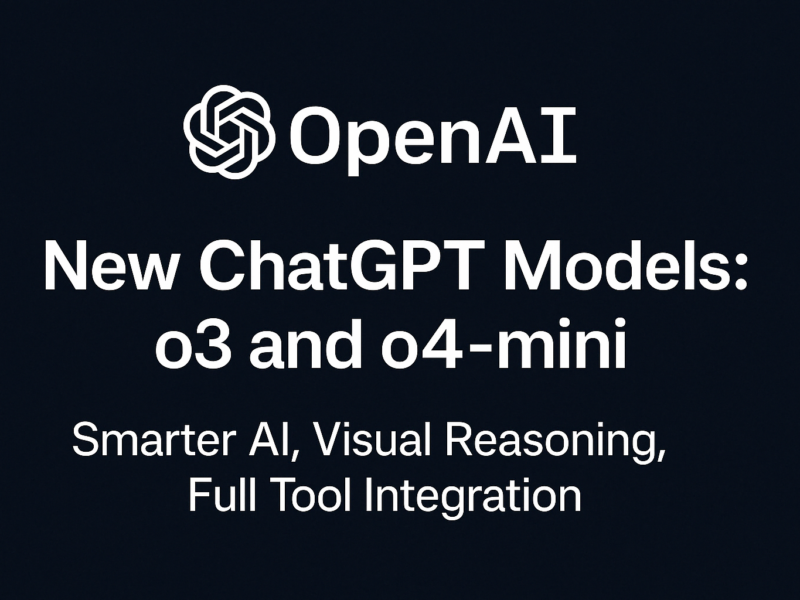Viggle AI has emerged as a noteworthy tool in the rapidly evolving landscape of artificial intelligence, specifically within animation. This innovative platform leverages sophisticated motion transfer technology to breathe life into static images, animating characters based on the movements captured in user-provided reference videos. Its intuitive design and effectiveness have quickly garnered popularity among diverse users, from casual meme-makers to professional content creators.
Viggle AI offers a suite of features, including Mix for character insertion, Move for animating still images, Multi for animating multiple characters, Mic for lip-syncing, and Rap for creating music videos, all accessible through a user-friendly interface across Discord, web platforms, and mobile applications. While Viggle AI excels in these specific animation tasks, it’s essential to acknowledge its limitations, particularly its dependence on existing media and the absence of granular manual controls, distinguishing it from text-to-video generators capable of producing entirely novel video content. Ultimately, Viggle AI presents a compelling solution for individuals and creators seeking to effortlessly generate engaging animated content from static images, especially for social media and meme creation.
Contents
- 1 II. Introduction to Viggle AI: Bringing Static Images to Life
- 2 III. Understanding Viggle’s Core Features: Mix, Move, Multi, Mic, and Rap
- 3 IV. The Technology Behind Viggle: Powered by JST-1
- 4 V. Hands-on Experience: Evaluating Viggle’s Performance
- 5 VI. User-Friendly Design: Assessing the User Experience
- 6 VII. Navigating the Limitations of Viggle AI
- 7 VIII. Visualising Viggle: Examples and Use Cases Visualising
- 8 IX. Viggle AI vs. The Competition
- 9 X. Pricing and Accessibility: Understanding Viggle’s Cost Structure
- 10 XI. Community and Reviews: Gauging User Sentiment
- 11 XII. The Company and Its Vision: Behind Viggle AI
- 12 XIII. Conclusion: Who Should Use Viggle AI?
- 13 Key Tables:
II. Introduction to Viggle AI: Bringing Static Images to Life
Viggle AI represents a significant advancement in the accessibility of animation technology, positioning itself as a leading AI animation tool that empowers users to transform static images into dynamic videos. At its core, Viggle AI employs sophisticated motion transfer techniques, enabling users to upload a photo of a character and a separate video clip. It subsequently generates an animation where the character in the image mimics the movements observed in the reference video.
This process is designed to be remarkably user-friendly, eliminating the need for prior experience in animation or video editing. The platform’s ability to seamlessly animate characters based on reference motions has contributed to its popularity among content creators who are constantly seeking fresh and engaging ways to produce content for social media platforms. Furthermore, its effectiveness in creating personalised memes has made it a favourite personalised tool for creating viral videos, offering a quick and efficient method to generate viral content without the complexities associated with traditional animation software.
The journey of Viggle AI began within the Discord community, a testament to its initial focus on accessibility and community engagement. This initial presence fostered rapid growth, with the community quickly expanding to encompass over 4 million users. The transition from a Discord-based tool to a standalone app and web platform in 2024 signifies a crucial step in its evolution, indicating a strong user demand that necessitated a more dedicated and feature-rich environment. This progression highlights the platform’s successful initial product offering, prioritising ease of use and accessibility, prioritising strongly with a broad audience interested in creative expression.
The substantial user base within the Discord community also served as a significant indicator of the potential for user-generated content. It provided a valuable feedback loop for Viggle’s development, particularly in identifying trends relevant to meme creation and viral video formats. This active community provided a constant stream of examples, use cases, and direct feedback, enabling Viggle to understand popular trends and refine its AI models to better cater to user needs in the dynamic world of online memes and social media content.
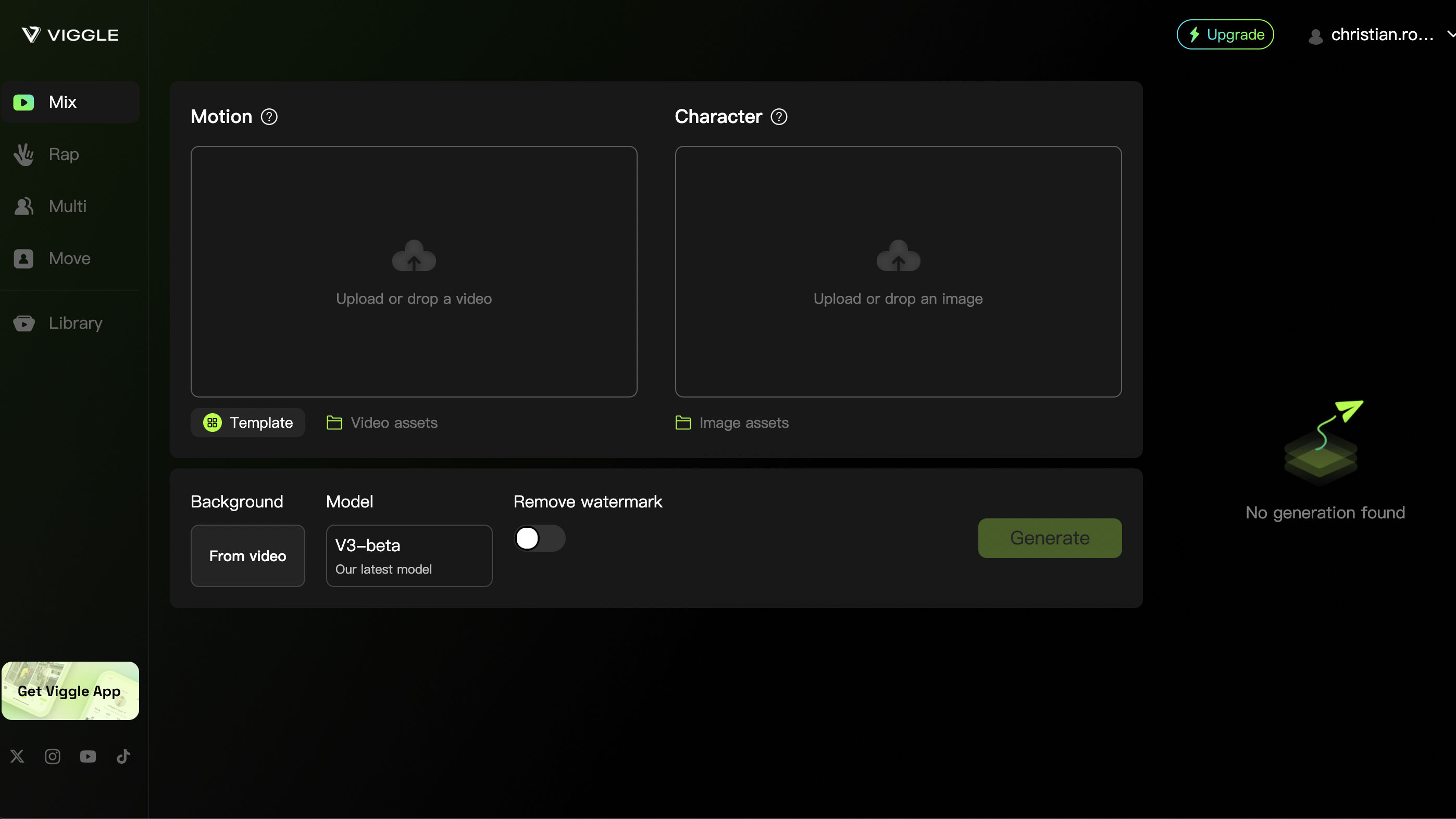
III. Understanding Viggle’s Core Features: Mix, Move, Multi, Mic, and Rap
Viggle AI boasts a comprehensive suite of features designed to cater to various animation needs, each offering a unique way to bring static images to life.
The Mix feature is central to Viggle’s core functionality, allowing users to integrate a character image into a motion reference video seamlessly. By uploading a photo and a video and hitting the “Viggle This!” button, the tool generates a new video where the uploaded character performs the actions depicted in the reference clip. Users can either have their character appear as a cutout against a chosen background or mask the character over the original video, effectively placing the character into existing scenes. This feature directly addresses the fundamental concept of motion transfer, providing an accessible way for users to visualise their characters in diverse scenes and insert themselves into popular video content, democratising visual effects for users with democratising skills. Mailing overspecialised videos is particularly relevant for meme creation and participation in viral online trends.
The Move feature expands upon the animation capabilities by enabling users to animate a character within a still image using a motion reference video. The primary goal of this feature is to make static photos dynamic, allowing characters to perform actions like dancing while ideally preserving the original image’s background. This functionality extends the creative possibilities beyond simply inserting characters into existing videos, offering a way to imbue static images with dynamic movement while maintaining their original context. This caters to users who wish to add a touch of animation to their photos for social media or personal enjoyment, providing a straightforward method to create engaging visual content from their existing static assets.
For more complex animation projects, the Multi-feature allows users to replace multiple characters within a single video by uploading several different character images. This feature facilitates the creation of scenarios involving multiple animated characters interacting within a video, such as choreographing group dances or recreating scenes from movies with different actors. The ability to animate multiple characters simultaneously enhances the storytelling potential of the tool, moving beyond single-character animations to allow for richer, more dynamic, and more prosperous creations, opening up possibilities for collaborative projects and more elaborate meme formats.
Adding an auditory dimension to animations, the Mic feature is an advanced lip-sync tool that allows users to make their chosen character talk, sing, dance, and move in coordination with audio input. Users can select music, input text, or record their voice, which then does the character’s actions, adding a significant layer of expressiveness and personalisation to the animations. Personalisation is the personalisation of avatars’ personalised video messages, allowing users to personalise their characters’ speech, making Viggle a more versatile tool for communication and entertainment.
Finally, the Rap feature provides a specific avenue for users interested in creating music-related content. This feature enables the generation of rap-style music videos using a user-provided text prompt and a character image. The introduction of this feature indicates an expansion into specific content formats, suggesting Viggle’s aim to cater to popular music trends and offer more structured creative options for users interested in generating music-themed video content. This demonstrates an understanding of current online video trends and a willingness to provide tailored tools for creating specific types of content.
IV. The Technology Behind Viggle: Powered by JST-1
The innovative capabilities of Viggle AI are underpinned by its proprietary 3D model called JST-1, developed by Viggle AI itself. This model is the first video-3D foundation model that incorporates an understanding of real-world physics. By analysing and rendering character movement, JST-1 facilitates the creation of animations that appear significantly more natural and lifelike. This integration of physics is a key differentiator, suggesting a focus on achieving a higher degree of realism in animations than other AI animation tools that might employ more straightforward motion transfer.
Furthermore, JST-1 enables controllable video generation, meaning that users have a degree of influence over the motion and behaviour of the animated characters. This aspect balances the platform’s ease of use with the need for creative control, allowing users to guide the AI and achieve specific animation results aligned with their creative vision. Viggle AI has positioned itself as a leader in achieving controllability, character consistency, and real-time performance in AI video, primarily attributed to the JST-1 model.
It is crucial to note that within Viggle AI, the term “JST-1” refers specifically to their proprietary video-3D foundation model and should not be confused with the widely used “JST” connectors found in electronics. This distinction is necessary to prevent misunderstandings among users searching for information about Viggle AI.
V. Hands-on Experience: Evaluating Viggle’s Performance
The performance of Viggle AI in motion transfer has been widely praised, with numerous examples of user-generated content and viral videos demonstrating its effectiveness. The technology excels at accurately identifying figures within still images and video footage and mapping the motion from the reference video onto the uploaded character image. This capability is particularly evident in its meme generator, which serves as a preexample of its ability to seamlessly mask characters into existing videos.
For instance, users can easily insert themselves or any other character into popular viral video clips, such as the well-known Tom Cruise running meme, highlighting the tool’s user-friendliness and the potential for creating highly engaging and shareable content. The platform further facilitates this by offering a library of over 1000 free meme templates, making meme creation accessible even to novice users. This strong performance in meme generation has likely played a significant role in Viggle AI’s rapid growth and popularity, as memes are ubiquitous and highly shareable online content.
Despite its strengths, Viggle AI has limitations; most notably, it cannot generate entirely new video content based solely on text prompts, a capability offered by text-to-video generators like Dream Machine and Sora. Viggle AI always requires an existing still image and a reference video as input for its animation process. This reliance on existing media positions Viggle AI as a motion transfer and character insertion tool rather than a comprehensive video generation platform. While it excels in augmenting and transforming existing content, it lacks the generative capabilities to create novel visual scenes from scratch based on textual descriptions, which might limit its applicability for users seeking to produce entirely original video content.
VI. User-Friendly Design: Assessing the User Experience
A significant aspect contributing to Viggle AI’s popularity is its remarkably intuitive interface. User experiences indicate the tool is straightforward and easy to use through its web platform or dedicated smartphone applications. The process of uploading media is designed to be straightforward, typically involving a simple drag-and-drop action. It requires minimal settings configuration, making it highly accessible for users regardless of their technical proficiency. The core functionalities, Mix, Move, Multi, Mic, and Rap, are conveniently located within a toolbar, ensuring access.
To enhance the user experience, Viggle AI provides clear summary explanations for emodeodes. Users can access concise descriptions, illustrative example images, and videos demonstrating best practices for achieving optimal results by clicking on a question mark icon associated with each mode. This thoughtful design makes Viggle AI particularly easy to use for individuals without prior animation experience, experieffectively democratizing access to sophisticated technology for a broad audience. This focus on simplicity and ease of use is a critical factor in Viggle’s widespread adoption, as it lowers the barrier to entry for users who want to create engaging animated content without needing advanced technical skills or in-depth animation knowledge.
While Viggle AI offers a powerful and accessible tool for animating static images, it is vital to acknowledge essential inherent limitations. A fundamental constraint is the need for a still image and a reference video to create animation. This requirement distinguishes it from AI tools capable of generating text prompts. Additionally, Viggle AI lacks options for manual fine-tuning of character motion, which can be a drawback for users seeking precise control over the animation’s nuances.
Furthermore, file size and resolution limits are imposed on both free and paid users. Free users are restricted to video uploads of up to 1 minute in length or 50 MB in size, with an output resolution capped at 720p. While the paid (Pro) subscription offers more generous limits, allowing for motion reference video uploads of up to 10 minutes or 100 MB, the output resolution remains limited to a maximum of 1080p. User feedback also suggests that the tool may experience difficulties with videos shot in darker lighting, where the outlines of subjects are less defined.
The overall realism of the generated animations is also significantly influenced by the quality of the source material, both the initial image and the reference video. These limitations indicate that Viggle AI is best suited for quick, relatively simple animation tasks, particularly those focused on character motion transfer and meme creation. It might not be ideal for professional animators or filmmakers who require greater control and higher project output quality.
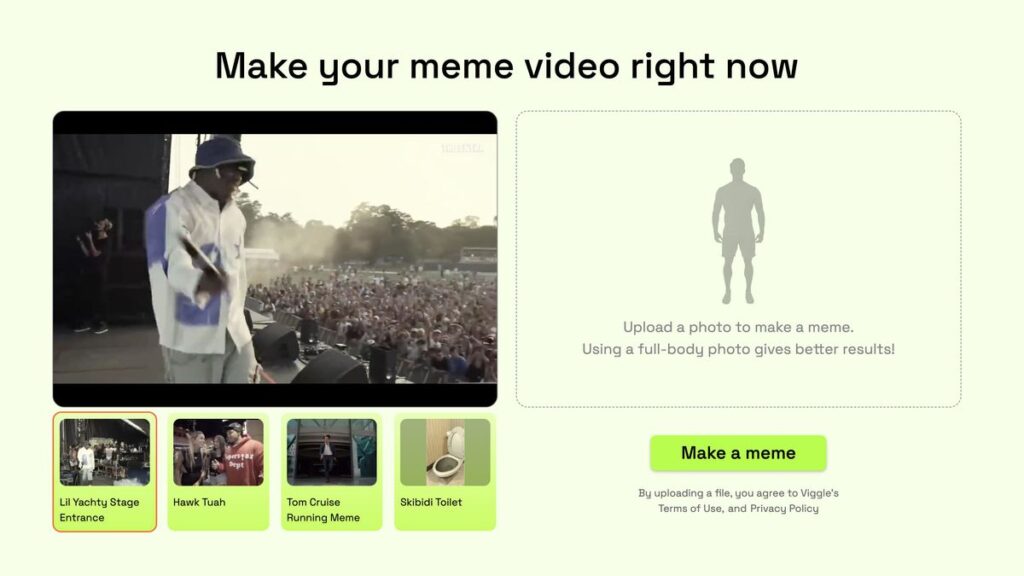
VIII. Visualising Viggle: Examples and Use Cases Visualising
Visualising illustrates AI struggles; several types of visuals would be beneficial in a comprehensive review. Screenshots of the web and mobile interfaces would effectively showcase the platform’s user-friendliness. Examples of animations created using the Mix feature could demonstrate the seamless insertion of characters into diverse video scenarios. Similarly, animations generated with the Move featured highlight stages can be brought to life with various motions, such as dancing.
A visual comparison contrasting Viggle’s approach with traditional animation methods could underscore the differences in time and complexity for achieving similar needs to achieve these illustrative examples; Viggle AI finds application in various uses. Casualness appeal lies in meme creation, allowing users to personalise and engage with internet trends easily.
Personalisation is valuable for generating engaging social media content across platforms like TikTok, Instagram, and YouTube. For professionals, Viggle AI can be used for prototyping and visualisation, enabling engineers to ideate and visualise character movements quickly. Visualisations can leverage Viggle to add unique and engaging animations to their teaching materials. Marketing professionals can also benefit from Viggle’s capabilities by creating attention-grabbing marketing visuals for various campaigns and materials.
The collaboration between Viggle AI and ZEPETO exemplifies its potential to bring avatars to life with real-world motions, showcasing its versatility beyond traditional animation. Individuals can also use Viggle to create greetings and messages with personalised photos. Furthermore, Viggle’s blog features numerous creator stories, highlighting how artists and filmmakers are integrating the tool into their workflows for diverse creative projects. Examples include Sylvia Nitzsche’s fusion of motion design with AI, Yves’s use of Viggle for CGI and animation, and SherryBeary’s stylised metaverse anime.
IX. Viggle AI vs. The Competition
When evaluating Viggle AI, it is essential to consider its position within the broader landscape of AI-powered video tools. The research material specifically mentions Dream Machine and Jupitrr as alternative tools. A clear distinction exists in their core functionalities and intended uses. Viggle AI focuses on motion transfer, taking motion from reference videos and applying it to static images. It excels in animating and inserting existing characters into video scenes, making it particularly well-suited for meme creation and generating engaging social media content. A key requirement for Viggle AI is the provision of both a video for reference.
In contrast, Dream Machine operates as a text-to-video generation tool. It can generate content, typically up to 10 seconds in length, based on text prompts provided by the user. This allows for the specification of despecifying angles and lighting within the prompt. Unlike Viggle AI, Dream Machine does not require existing images or videos to function, offering a different approach to video creation.
Jupitrr, on the other hand, hJupiter identified as an AI tool for editing social videos. Its primary function involves analysing spoken audio within existing videos, particularly those featuring talking heads, and then adding supplementary content to match the audio. This tool focuses on enhancing and streamlining the editing process for existing video footage rather than creating animations from static images.
This comparison highlights Viggle AI’s unique strength in motion transfer and character animation, differentiating it from the video generation capabilities of Dream Machine and the video editing focus of Jupitrr. This distinct Jupiter is crucial for users to understand which tool aligns best with their specific creative objectives. Beyond these tools, the landscape of AI video tools includes other platforms like Pika Labs, ReelCraft, Faceless Video, Pollo AI, Motionshift, Flawless AI, Windsor, Atlabs, and D-ID. These tools offer a diverse range of functionalities, including text-to-video generation, creation of AI avatars, and various video editing capabilities, further illustrating the breadth of options available in this rapidly evolving field.
X. Pricing and Accessibility: Understanding Viggle’s Cost Structure
Viggle AI offers a tiered pricing structure, including a Free Plan and a Viggle Pro Subscription, to cater to different user needs and usage levels. The Free Plan allows users to generate up to five videos daily in relaxed mode, which involves slower generation times and includes a watermark on the output. Free users can have up to two video generations running concurrently, and their assets and generated videos are stored for 60 days. The maximum output resolution for free users is 720p, and they are limited to motion video uploads of 1 minute or 50 MB.
For users requiring more extensive features and higher usage limits, the Viggle Pro Subscription is available at a monthly cost of $9.99 (though this may vary slightly depending on the region). This subscription provides users with 80 monthly credits, which can be used to generate watermark-free videos in fast mode (typically costing one credit for a 15-second video). Pro subscribers can generate up to 10 videos daily in relaxed mode and can have four video generations running simultaneously. The maximum Motion Video Upload limit is significantly increased to 10 minutes or 100 MB, and the output resolution is upgraded to a maximum of 1080p. A key benefit for Pro users is the permanent storage of their assets and generated videos, along with faster background enhancement and the ability to create customised multi-person videos on the app. Customized Pro members have the option to purchase as needed.
Viggle AI also offers a Creator Program that provides selected artists and creators additional benefits, such as a Viggle Pro subscription and 1000 extra credits. This freemium model, with its valuable free tier, allows new users to explore Viggle’s capabilities without any initial financial commitment. At the same time, the Pro subscription offers substantial advantages for more active users who require higher resolution, longer videos, and the removal of watermarks.
In terms of accessibility, Viggle AI can be accessed through multiple platforms. It originated as a Discord community and remains accessible through this platform. Additionally, Viggle AI has a dedicated web platform for creating animations and mobile applications available for both iOS (iPhone) and Android devices. The APK file can also be downloaded directly from Viggle’s website for Android users. This multi-platform accessibility enhances user convenience and allows creators to work on their projects from their preferred devices, catering to various workflows and preferences.
XI. Community and Reviews: Gauging User Sentiment
User feedback and sentiment surrounding Viggle AI can be gauged from various sources, including its active Discord community, app store reviews, and third-party articles. The Discord Community, boasting over 4 million members, stands as a vibrant hub for users to engage with the platform, share their creations, provide feedback, and connect. It has even been recognised as one of the most entertaining servers to join. The widespread adoption of the Viggle bot, which has been added to over 51,000 other Discord servers, further underscores its popularity and ease of integration within the Discord ecosystem. This large and active community fosters a strong sense of belonging. It provides a valuable ecosystem where users can learn from each other, find inspiration, and stay informed about the latest features and trends.
App Store reviews on iOS and Android platforms generally reflect positive sentiment towards Viggle AI, with many users awarding high ratings. For example, the US iOS App Store is rated 4.7 stars based on over 9,200 ratings. Users frequently commend the app for its outstanding quality, entertainment value, and ease of use. Specific positive feedback includes the seamlessness of the generated movements, the fun and engaging nature of content creation, and the overall user-friendliness of the application. However, some negative reviews have surfaced, mentioning issues such as difficulties with signing in, account expiration problems, lag on older devices, and concerns regarding potential copyright infringements when using templates that include pre-loaded music. One user reported encountering inappropriate content within the app’s recommendations, suggesting a need for enhanced moderation, while another user experienced problems with saving videos on Android devices.
Third-party reviews and articles also tend to be largely positive, highlighting Viggle AI’s intuitive interface, the effectiveness of its motion transfer technology, and its strong potential for meme creation. Some reviews have noted certain limitations, such as the requirement for a constant internet connection, potential performance issues on older hardware, and the limited availability of advanced customisation options. Notably, a user on CustomizationR’s concerns is concerned about customisations, specifically regarding the storage and potential use of uploaded assets for training its AI models, claiming that content marked for deletion was not actually removed from Ters.
Overall, the user sentiment surrounding Viggle AI is predominantly positive, with users appreciating its ease of use and motion transfer capabilities. However, the identified technical glitches, moderation concerns, and privacy issues warrant attention and highlight areas where Viggle AI could further enhance its platform and user experience.
XII. The Company and Its Vision: Behind Viggle AI
Viggle AI is the product of WarpEngine Canada Inc., a Canadian start-up founded in 2022 by Hang Chu. The company has garnered significant backing from prominent investors, including Andreessen Horowitz (a16z) and Two Small Fish Ventures. In August 2024, Viggle AI secured $19 million in Series A funding, led by Andreessen Horowitz, to scale its operations, accelerate product development, and expand its team. Some sources indicate the funding amount was $26 million.
The platform has experienced rapid growth, amassing over 4 million users and establishing itself as the host of the second-largest Discord community dedicated to AI videos worldwide. Viggle AI’s core mission is to simplify the animation process and empower creators of all skill levels to realise their creative visions through realisable video and virtual animation. Its proprietary JST-1 technology, which incorporates a deep understanding of physics, is central to enabling lifelike character movements and expressions.
The company boasts a world-class research and engineering team that is actively developing a foundation model poised to transform the future of content creation further. Further ahead, Viggle AI is exploring potential future features, including the upcoming Viggle AI Animate, allowing users to animate static characters using preset motion templates, offering a more comprehensive image-to-video generation capability. The company is also experimenting with integrating Google’s Gemini 2.0 Flash and Imagen 3 to introduce features like image-to-virtual video characters and dynamic AI narration. These developments suggest a commitment to ongoing innovation and expanding Viggle’s capabilities beyond its current motion transfer focus, aiming to provide users with increasingly powerful and versatile tools for creative expression.
XIII. Conclusion: Who Should Use Viggle AI?
Viggle AI has established itself as a powerful and accessible tool for animating static images, offering several key strengths. Its ease of use and intuitive interface make it accessible to users with varying levels of technical expertise. The platform’s motion transfer technology is highly effective in bringing characters to life, and it boasts strong capabilities for meme creation and participation in online trends. The presence of a large and active community provides valuable support and inspiration for users. Furthermore, its freemium pricing model offers a valuable free tier for useful information and basic use.
However, potential users should also be aware of Viggle AI’s weaknesses. The tool’s reliance on existing still images and reference videos limits its ability to generate entirely new video content from scratch. The lack of manual fine-tuning options may not satisfy users requiring precise control over animations. File size and resolution limits, particularly for free users, might pose restrictions for certain projects. Additionally, specific user reports have raised potential privacy concerns regarding data retention that warrant consideration.
Based on this analysis, Viggle AI would be particularly beneficial for:
- Social media content creators seeking a quick and easy way to produce engaging animated videos and memes to enhance their online presence.
- Meme enthusiasts looking to personalise and share viral content with a personal touch are creative, and those aiming to incorporate dynamic visuals into their teaching materials to enhance student engagement.
- Marketers seeking cost-effective solutions for creating attention-grabbing visual content for marketing campaigns and social media.
- Individuals who wish to bring their personal photos and chao life with motion for entertainment and creative expression.
While Viggle AI is a valuable tool for these specific use cases, individuals or professionals requiring full control over every complete animation or the ability to generate entirely new video content from text prompts might find alternative solutions, such as professional animation software or advanced text-to-video AI tools, more suitable for their needs.
Key Tables:
1. Viggle AI Feature Comparison
| Feature | Description | Key Use Cases |
|---|---|---|
| Mix | Upload an image and a motion video to generate an animation of the character performing the video’s action. Offers options for background cutout or masking over the original video. | Inserting characters into existing scenes, meme creation, and characters in different scenarios |
| v | Animate a character in an animated image based on a motion reference video, aiming to keep the original background intact. | Making static photos dance or perform actions, adding dynamic movement to still images for social media. |
| Multi | Replace multiple characters in a single video by uploading several character images. | Creating scenarios with multiple animated characters, group dances, and recreating movie scenes with different characters. |
| Mic | The advanced lip-sync feature allows you to dance and move in sync with selected music, typed text, or user-recorded voice. | Creating talking avatars, personalised video messages, and lip-sync personalisation. |
| Rap | Genepersonalised music videos using a text prompt and a character image. | Creating music-themed video content and exploring music trends in animation. |
2. Viggle AI Free vs Pro Plan Comparison
| Feature | Free | Viggle Pro |
|---|---|---|
| Monthly Cost | $0 | $9.99 |
| Daily Relaxed Mode Videos | 5 | 10 |
| Video Generations at Once | 2 | 4 |
| Credits | – | 80 credits/month |
| Watermark-free Videos in Fast Mode | No | Yes (consumes credits) |
| Maximum Motion Video Upload Limit | 1 min or 50 MB | 10 mins or 100MB |
| Video Resolution | Up to 720p | Up to 1080p |
| Access to Multi-Person Videos on the App | No | Yes |
| Storage Time for Assets & Generations | 60 days | Forever |
| Faster Background Enhancement | No | Yes |
| Feature | Viggle AI | Dream Machine | Jupiter |
|---|---|---|---|
| Core Functionality | Motion transfer from video to static image | Generates new video from a text prompt | Edits existing social videos by adding content based on audio |
| Input Requirements | Still image and reference video | Text prompt | Existing video clips |
| Output | Animated video of the still image performing the motion from the reference video | Entirely new video content | Enhanced existing video footage |
| Primary Target Use | Meme creation, social media content, animating characters | Creating novel video content from ideas | Enhancing and streamlining social video editing |
